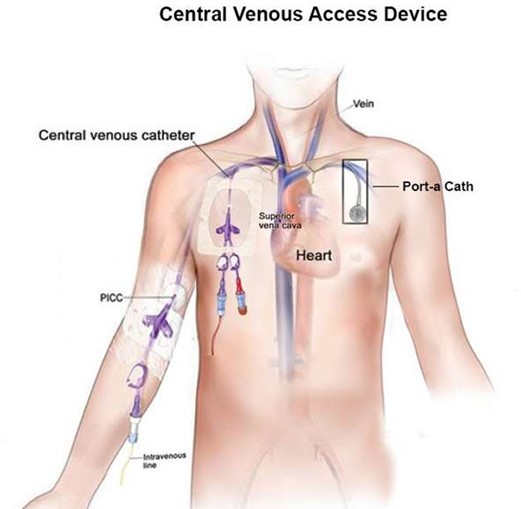Heparin Infusion Review.
A nurse is reviewing the laboratory results of a client who is receiving heparin by continuous IV infusion.
Which of the following results indicates the nurse should decrease the infusion rate?
Erythrocyte sedimentation rate 18 mm/hr.
aPTT 90 seconds.
INR.2.
Platelets 350,000/mm.
The Correct Answer is B
Heparin is an anticoagulant medication that is used to decrease the clotting ability of the blood and help prevent harmful clots from forming in blood vessels.
The activated partial thromboplastin time (aPTT) is a laboratory test commonly used to monitor unfractionated heparin therapy.
An aPTT value of 90 seconds is above the therapeutic range and indicates that the heparin infusion rate should be decreased.
Choice A is wrong because Erythrocyte sedimentation rate 18 mm/hr, is not the correct answer because it is not used to monitor heparin therapy.
Choice C is wrong because INR.2, is not the correct answer because it falls within the normal range for INR values and is not used to monitor heparin therapy.
Choice D is wrong because Platelets 350,000/mm, is not the correct answer because it falls within the normal range for platelet counts and is not used to monitor heparin therapy.
Nursing Test Bank
Naxlex Comprehensive Predictor Exams
Related Questions
Correct Answer is D
Explanation
Lovastatin is a lipid-lowering medication that belongs to the statin drug class.
It is used to treat and prevent coronary heart disease and hypercholesterolemia.
Before starting therapy with lovastatin, liver function tests should be performed to establish a baseline and monitor for any potential adverse effects on the liver.
Choice A is wrong because Western blot analysis, is not the correct answer because it is a laboratory technique used to detect specific proteins in a sample, not to monitor liver function.
Choice B is wrong because Pancreatic enzymes, is not the correct answer because it refers to enzymes produced by the pancreas that aid in digestion, not liver function.
Choice C is wrong because Exercise electrocardiography, is not the correct answer because it is a diagnostic test used to assess the heart’s response to physical stress, not liver function.
Correct Answer is A
Explanation

Total parenteral nutrition (TPN) is a highly concentrated solution that provides nutrients to the body intravenously.
It is typically administered through a central venous access device, such as a central venous catheter or a peripherally inserted central catheter (PICC), because it can irritate the walls of smaller veins.
Choice B is wrong because Midline catheter, is not an appropriate route for TPN administration because it is not a central venous access device.
Choice C is wrong because Subcutaneous, is not an appropriate route for TPN administration because it is not given intravenously.
Choice D is wrong because Intraosseous, is not an appropriate route for TPN administration because it is typically used in emergency situations when intravenous access cannot be obtained.
Whether you are a student looking to ace your exams or a practicing nurse seeking to enhance your expertise , our nursing education contents will empower you with the confidence and competence to make a difference in the lives of patients and become a respected leader in the healthcare field.
Visit Naxlex, invest in your future and unlock endless possibilities with our unparalleled nursing education contents today
Report Wrong Answer on the Current Question
Do you disagree with the answer? If yes, what is your expected answer? Explain.
Kindly be descriptive with the issue you are facing.
